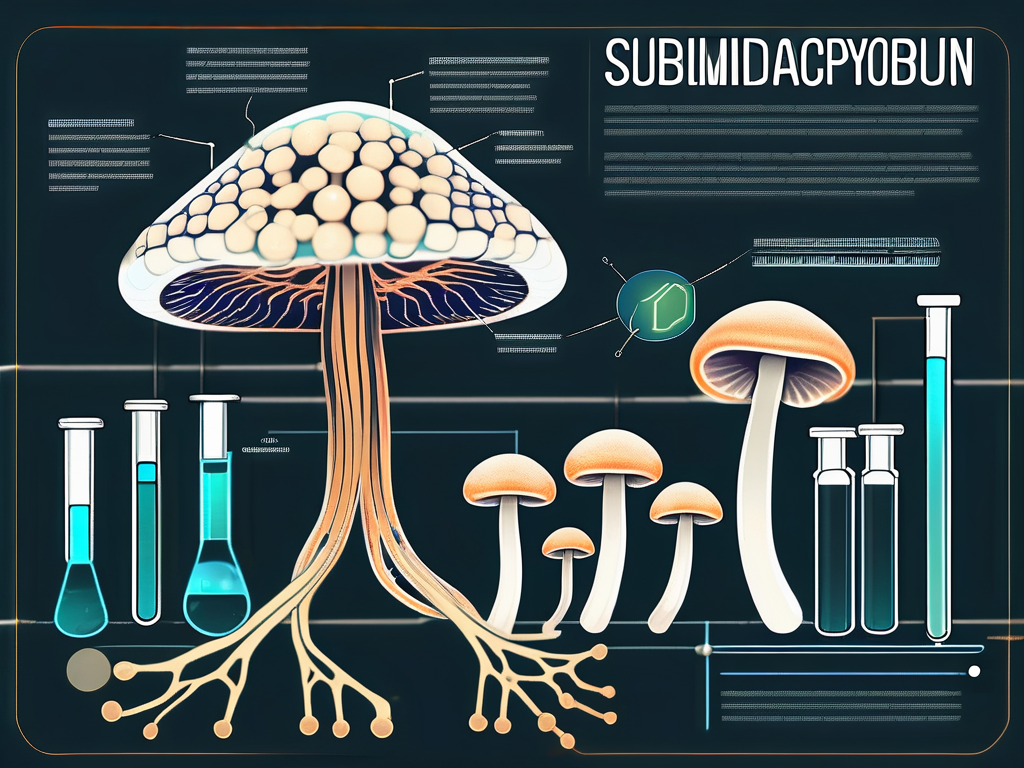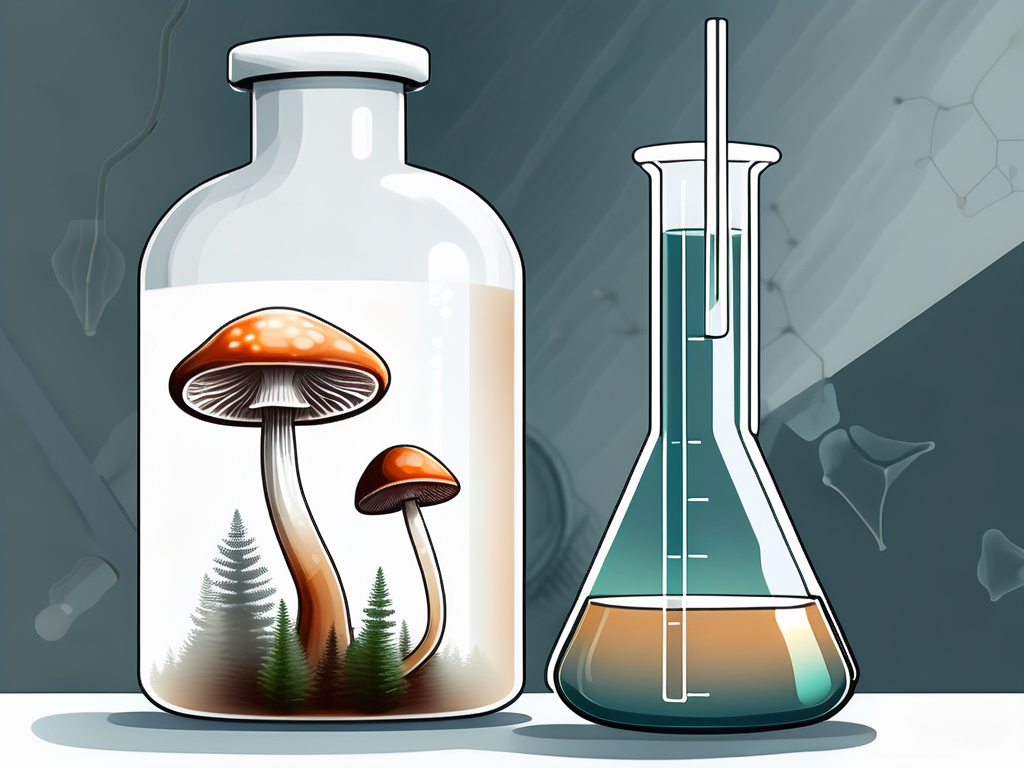
Synthetic psilocybin, a psychoactive compound derived from certain species of mushrooms, has gained significant attention in recent years for its potential therapeutic benefits. However, just like any powerful substance, it is crucial to understand the complexities, risks, and implications associated with its use. In this article, we will explore the science, potential risks, comparisons, and legal considerations surrounding synthetic psilocybin.
Understanding Synthetic Psilocybin
Before delving into the specifics, let’s first grasp the concept of synthetic psilocybin. Psilocybin, a naturally occurring psychedelic compound found in certain species of mushrooms, has been used for centuries in various cultural and spiritual practices. In recent years, researchers have been exploring the potential therapeutic benefits of psilocybin, leading to the development of synthetic versions of this compound.
What is Synthetic Psilocybin?
Synthetic psilocybin, also known as 4-phosphoryloxy-N,N-dimethyltryptamine (4-PO-DMT), is an artificially produced compound that replicates the chemical structure of natural psilocybin found in mushrooms. It acts as a potent serotonin receptor agonist, leading to profound alterations in perception and consciousness. The effects of synthetic psilocybin can vary depending on dosage, set, and setting, with experiences ranging from introspective journeys to mystical encounters.
How is Synthetic Psilocybin Produced?
Synthetic psilocybin is synthesized through complex laboratory procedures. Scientists start with precursor chemicals like tryptamine or 4-hydroxyindole, which are then transformed into psilocybin through a series of molecular transformations. This process ensures the purity and consistency of the compound for research and therapeutic purposes. The production of synthetic psilocybin requires meticulous attention to detail and adherence to strict quality control measures to ensure the safety and efficacy of the final product.
The Science Behind Synthetic Psilocybin
Understanding the scientific aspects of synthetic psilocybin is fundamental in assessing its potential risks and benefits. Synthetic psilocybin, a lab-created version of the psychoactive compound found in certain mushrooms, has garnered significant attention for its potential therapeutic applications and mind-altering effects.
Researchers and scientists have delved deep into the chemical composition and effects of synthetic psilocybin, aiming to unravel the mysteries of how it interacts with the human brain and consciousness.
The Chemical Structure of Synthetic Psilocybin
Synthetic psilocybin’s chemical structure consists of a tryptamine backbone with a phosphoryloxy group attached to the 4-position. This unique molecular arrangement is crucial for its affinity to bind to serotonin receptors in the brain, especially the 5-HT2A receptor subtype. By binding to these receptors, synthetic psilocybin disrupts typical serotonin signaling pathways, leading to profound alterations in perception and cognition.
The phosphoryloxy group plays a pivotal role in the compound’s stability and bioavailability, allowing it to be efficiently absorbed and metabolized by the body, ultimately exerting its psychedelic effects on the mind.
How Does Synthetic Psilocybin Affect the Brain?
When consumed, synthetic psilocybin is rapidly metabolized into psilocin, its active form, which closely resembles the structure of serotonin. This similarity enables psilocin to bind to and activate serotonin receptors, particularly the 5-HT2A subtype, triggering a cascade of neural responses that result in altered perception, mood, and cognition.
Studies suggest that synthetic psilocybin’s impact on the brain goes beyond mere hallucinations, as it has been shown to induce changes in brain activity and connectivity. By targeting key neural networks involved in perception, emotion regulation, and introspection, synthetic psilocybin holds promise as a tool for exploring consciousness and treating various mental health conditions.
Potential Risks and Side Effects of Synthetic Psilocybin
While synthetic psilocybin shows promise in therapeutic settings, it is essential to acknowledge and weigh its potential risks and side effects.
Understanding the complexities of synthetic psilocybin is crucial for both researchers and users alike. The compound’s effects can vary significantly depending on various factors, including dosage, individual physiology, and mental state. This variability underscores the importance of careful consideration and monitoring when using synthetic psilocybin.
Immediate Physical and Psychological Effects
Upon consumption, synthetic psilocybin can induce a range of physical and psychological effects. These effects may include sensory distortions, emotional breakthroughs, euphoria, and introspective experiences. However, some individuals may also experience anxiety, paranoia, or nausea, especially at higher doses or in unfamiliar environments.
It is crucial to note that the effects of synthetic psilocybin can be unpredictable and may differ from person to person. Factors such as pre-existing mental health conditions, medication interactions, and environmental stimuli can all play a role in shaping the overall experience of consuming synthetic psilocybin.
Long-term Implications of Synthetic Psilocybin Use
Currently, the long-term implications of synthetic psilocybin use remain largely unknown. More research is required to determine whether repeated or excessive use may lead to any lasting psychological or physiological effects. Additionally, factors such as individual susceptibility, set, and setting may influence an individual’s response to synthetic psilocybin.
Exploring the potential long-term effects of synthetic psilocybin is a complex and multifaceted endeavor. Researchers are actively investigating how sustained use of the compound may impact cognitive function, emotional well-being, and overall health. By gaining a deeper understanding of these long-term implications, we can better inform individuals about the potential risks associated with synthetic psilocybin consumption.
Comparing Synthetic Psilocybin and Natural Psilocybin
When discussing synthetic psilocybin, it is imperative to consider its similarities and differences in comparison to its natural counterpart.
Psilocybin, the psychoactive compound found in certain mushrooms, has garnered attention for its potential therapeutic benefits and mind-altering effects. The comparison between synthetic and natural forms of psilocybin is crucial for understanding their respective impacts on individuals.
Similarities and Differences in Effects
Both synthetic and natural psilocybin produce similar psychological effects, such as altered perception, introspection, and mystical experiences. Users often report profound insights and spiritual connections when consuming either form of psilocybin. However, synthetic psilocybin offers more precise dosing and purity control compared to wild-grown mushrooms, where variations in potency can occur due to environmental factors and genetic variability.
Furthermore, the cultivation of natural psilocybin mushrooms raises ecological considerations, as unsustainable harvesting practices can threaten wild populations. In contrast, synthetic psilocybin production can be more sustainable and environmentally friendly, reducing the strain on natural habitats.
Safety Concerns for Both Types
Regardless of the source, responsible use of psilocybin is essential. With synthetic psilocybin, the advantage lies in the ability to minimize potential issues related to misidentification, variability, and unwanted contaminants. Quality control measures in synthetic production facilities help ensure a consistent and safe product for consumers.
However, it is important to emphasize that psilocybin use, whether synthetic or natural, should always be undertaken with caution and in controlled settings to reduce risks. Proper education on dosage, set, and setting is crucial for maximizing the benefits of psilocybin while minimizing the potential for adverse effects. Research into the long-term effects of both synthetic and natural psilocybin is ongoing, aiming to provide a comprehensive understanding of their impact on mental health and well-being.
Legal and Ethical Considerations of Synthetic Psilocybin Use
Legal and ethical aspects surrounding the use of synthetic psilocybin have sparked considerable debate and contemplation.
Exploring the landscape of synthetic psilocybin use unveils a complex web of regulations, cultural attitudes, and scientific inquiries. Beyond the surface-level discussions lie intricate layers of history, pharmacology, and societal norms that shape the perceptions and policies surrounding this psychedelic compound.
Current Legal Status of Synthetic Psilocybin
As of now, synthetic psilocybin is categorized as a Schedule I substance in many jurisdictions due to its hallucinogenic properties and no recognized medical use. However, some countries and regions have begun exploring exemptions to allow research or therapeutic use under specific circumstances.
Diving deeper into the legal realm, one encounters a tapestry of international treaties, national laws, and evolving precedents that influence the scheduling and accessibility of synthetic psilocybin. The interplay between scientific evidence, public opinion, and political agendas adds a dynamic dimension to the ongoing discourse on the legal status of this psychedelic substance.
Ethical Debates Surrounding Synthetic Psilocybin Use
The ethical implications of using synthetic psilocybin encompass various perspectives. Some argue that its potential therapeutic benefits outweigh the risks, while others express concerns about recreational misuse, long-term consequences, and societal implications. Striking a balance between ensuring public safety and allowing scientific exploration remains essential in shaping ethical guidelines for its use.
Delving into the ethical considerations reveals a kaleidoscope of philosophical frameworks, medical ethics principles, and cultural values that underpin the discussions on synthetic psilocybin. Questions of autonomy, beneficence, justice, and respect for persons intertwine with real-world scenarios of patient care, substance regulation, and individual liberties, creating a rich tapestry of ethical dilemmas and deliberations.
In Conclusion
Synthetic psilocybin holds immense potential for therapeutic applications and scientific research. Understanding its chemical nature, effects, risks, and legal considerations provides a comprehensive perspective for individuals and policymakers alike. As the field progresses, continued exploration and responsible use will further contribute to unlocking the potential benefits of synthetic psilocybin while mitigating possible harm.








